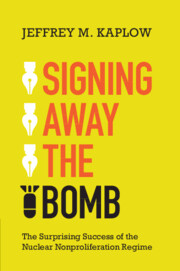1 - Introduction
Published online by Cambridge University Press: 08 December 2022
Summary
The opening chapter gives a general outline of the nuclear nonproliferation regime, summarizes the argument and approach to the subject, explains the book’s contribution to the literature and policy debate, and provides an overview of the remaining chapters.
Keywords
Information
- Type
- Chapter
- Information
- Signing Away the BombThe Surprising Success of the Nuclear Nonproliferation Regime, pp. 1 - 27Publisher: Cambridge University PressPrint publication year: 2022
